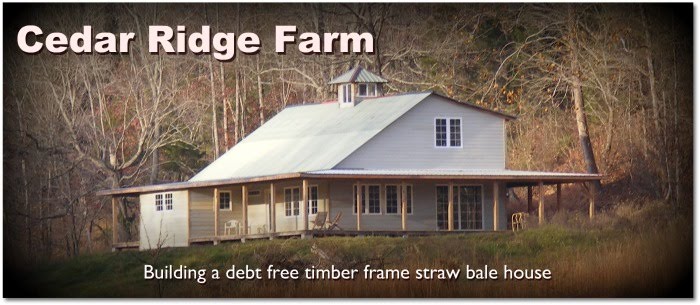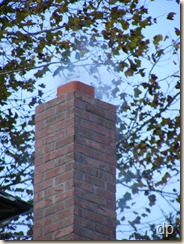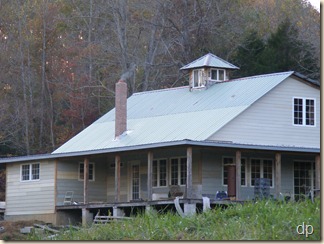After getting started on the chimney nearly a month ago, I continued to work on it as the weather permitted and as I had time. The first day on my own, I was able to install the thimble where the stove pipe will connect on the inside, and I was able to continue above it a few courses. The next day required cutting a hole in the roof and extending the chimney above the house.
I was able to take the chimney high enough above the roof that day so that I could flash around it, just in case it decided to rain. For flashing, I used aluminum flashing material that I already had. I put a piece across the front, pieces up each side, and a piece across the back of the chimney. Also, when laying the bricks, I etched the mortar for step flashing on the sides and for the flashing on the back. 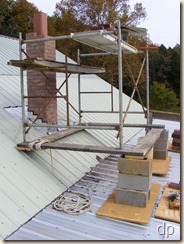 Based upon a recommendation, I used polyurethane caulk to seal the edges of the flashing and underneath it.
Based upon a recommendation, I used polyurethane caulk to seal the edges of the flashing and underneath it.
As the chimney continued to build high, it became necessary to set up scaffolding in order to keep it going. I nailed some 2x8s together, leveled up this framework on the roof in front of the chimney, tied it to the portion of the chimney already constructed so that it couldn’t slip out of place, and set up a section of scaffolding on top. This worked out very well. I was able to build the chimney nine feet above the roof with this one section of scaffolding.
I debated making the chimney only 7 feet above the roof, but finally decided on going the full 9 feet.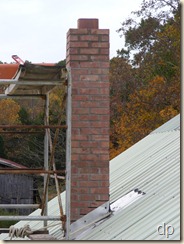 I figured it would be easier to add the extra section of liner and bricks now than it would be to do it later on if it became necessary.
I figured it would be easier to add the extra section of liner and bricks now than it would be to do it later on if it became necessary.
Finally, on October 11, I finished the chimney. It is 20 feet tall, extending from first floor level in the house (it stands on its own foundation). On that day, I laid 14 courses of brick and capped it with mortar around the last few inches of the clay liner. I took down the scaffolding, finished the little bit of flashing that I hadn’t completed (some step flashing on the east side), added a little more polyurethane caulk, and took some photos.
At the end of last week, Dad and Danny helped me get the wood stove I’ve had in the garage for the last several years (it’s one we heated our current home with for a couple of winters after we first moved here) into my truck and on the porch of the new house. Today, Ramiah cleaned the stove. So, this afternoon, I took it in the house and connected it to the chimney.
With the stove hooked up, I decided to build a small fire to inaugurate the chimney. So, this evening, we had first smoke in the new chimney. It was exciting!
